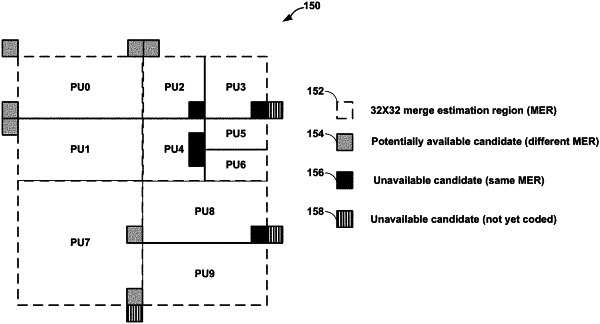| CPC H04N 19/58 (2014.11) [H04N 19/105 (2014.11); H04N 19/139 (2014.11); H04N 19/167 (2014.11); H04N 19/176 (2014.11); H04N 19/436 (2014.11)] | 23 Claims |

|
1. A method of decoding video data, the method comprising:
(a) storing a table of history-based motion vector predictors (HMVPs);
(b) determining motion information for a first block of the video data;
(c) determining that the first block is located at a bottom-right corner of a motion estimation region (MER);
(d) determining if a value of (an x-coordinate of a top-left sample of the first block plus a width of the first block divided by a size of the MER) is greater than (the value of the x-coordinate of the top-left sample divided by the size of the MER);
(e) determining if a value of (a y-coordinate of a top-left sample of the first block plus a height of the first block divided by the size of the MER) is greater than (the value of the y-coordinate of the top-left sample divided by the size of the MER);
adding the motion information for the first block to the table of HMVPs in response to (c), (d) and (e) being true; and
using the table of HMVPs to decode a second block of the video data.
|